Step-by-Step Guide to Increase Website Visibility and Drive Traffic
In today’s digital age, having a strong online presence is crucial for any business or personal brand. It’s no longer enough to simply have a website; you must ensure it stands out and reaches your target audience effectively. Optimizing your website for visibility not only helps you reach a wider audience but also improves your search engine rankings, drives organic traffic, and ultimately, enhances your brand’s credibility. By implementing the right strategies, you can significantly increase website visibility and ensure your content is seen by those who matter most. Here’s how you can achieve this:
1. Conduct Keyword Research
Keyword research is the foundation of SEO and is essential to increase website visibility. Identify the keywords and phrases your target audience is searching for. Tools like Google Keyword Planner, SEMrush, and Ahrefs can help you find relevant keywords with high search volume and low competition.
- Use Long-Tail Keywords: These are more specific phrases that are less competitive and more likely to convert.
- Incorporate Keywords Naturally: Ensure that keywords are seamlessly integrated into your content without keyword stuffing.
Here are examples from different professionals in the health and wellness industry:
- Life Coaches: Optimize for search visibility with keywords like “personal development,” “goal setting,” and “life coaching tips.” For long-tail keywords, consider phrases like “how to set achievable goals with a life coach” and “personal development plans for busy professionals.” Integrate these naturally, such as with the phrase: “Discover effective personal development plans for busy professionals with our expert life coaching tips.”
- Counsellors: Boost search visibility with keywords like “mental health counselling,” “anxiety therapy,” and “relationship counselling.” For long-tail keywords, use phrases like “how to manage anxiety with counselling” and “relationship counselling tips for couples.” Integrate naturally, such as with the phrase: “Learn how to manage anxiety with professional counselling and improve your relationships with our expert tips.”
- Yoga Instructors: Enhance search visibility with keywords like “yoga classes,” “beginner yoga,” and “online yoga courses.” Use long-tail keywords such as “best yoga poses for beginners” and “benefits of online yoga classes.” Integrate these naturally, such as with the phrase: “Join our online yoga courses and explore the best yoga poses for beginners to improve your overall well-being.”
- Fitness Gurus: Improve search visibility with keywords like “fitness training,” “workout plans,” and “personal training.” Use long-tail keywords such as “effective workout plans for weight loss” and “benefits of personal training.” Integrate these naturally, such as with the phrase: “Achieve your fitness goals with our effective workout plans and personalized training programs.”
2. Create High-Quality Content
Creating high-quality, relevant, and valuable content is the cornerstone of effective SEO. Not only does such content attract visitors to your website, but it also encourages them to stay longer, explore more, and ultimately engage with your brand. Here are key strategies to ensure your content remains compelling and relevant:
- Write Engaging Blog Posts: Craft blog posts that address the specific pain points and interests of your target audience. To keep your content engaging, use a combination of text, images, videos, and infographics. This multimedia approach caters to different preferences and makes your content more visually appealing and interactive.
- Update Content Regularly: Consistently updating your website with fresh content signals to search engines that your site is active and relevant. Regular updates also give your audience a reason to return, keeping your website at the forefront of their minds. Whether it’s through new blog posts, updated information on existing pages, or the latest industry news, frequent updates can significantly enhance your website’s visibility.
By following these strategies, you can create a dynamic and engaging website that not only attracts visitors but also retains them, boosting your overall SEO performance.
3. Optimize On-Page SEO
On-page SEO is crucial for optimizing individual web pages to rank higher and attract more relevant traffic. Here are some key factors to keep in mind:
- Title Tags and Meta Descriptions: Make sure your title tags and meta descriptions are compelling and include your target keywords. Keep title tags within 50 characters and meta descriptions within 150 characters.
- URL: Ensure your URL slug includes your target keywords for better visibility.
- Header Tags (H1, H2, H3): Use header tags to structure your content and make it easier for search engines to understand. They should be ordered as H1, H2, and so on.
- First Paragraph: Incorporate your target keywords in the first paragraph of each page to enhance relevance.
- Featured Images: Add feature images so that when your page link is shared, the feature image accompanies it. Include your target keywords in the alt text.
- Alt Text for Images: Use descriptive alt text for images to improve accessibility and help search engines index your images, ensuring it includes your target keywords.
To ensure your on-page SEO is effective, use a simple Google Chrome extension tool like Mangools to double-check your optimizations.
By focusing on these elements, you’ll enhance your website’s visibility and improve its ranking in search results.
4. Enhance Mobile Friendliness
With the majority of users accessing websites on mobile devices, ensuring your site is mobile-friendly is essential. A mobile-friendly website not only enhances user experience but also significantly impacts your search engine rankings and overall visibility. Here’s how to increase website visibility with this:
- Responsive Design: Implementing responsive design means your website automatically adjusts and adapts to various screen sizes and devices, providing a seamless user experience whether visitors are using a smartphone, tablet, or desktop. This involves flexible grids and layouts, scalable images, and CSS media queries. A well-designed responsive site ensures that all content is easily accessible and navigable, regardless of the device being used.
- Mobile-First Indexing: Google predominantly uses the mobile version of your site for indexing and ranking, so it’s critical to optimize your site for mobile. This means ensuring that your mobile site is fast, efficient, and fully functional. Key aspects to consider include:
- Speed Optimization: Mobile users expect fast load times. Compress images, minimize code, and leverage browser caching to enhance performance.
- Simplified Navigation: Mobile screens are smaller, so streamline your navigation by using clear, concise menus and easy-to-tap buttons.
- Readable Text: Ensure that text is easily readable on smaller screens without the need for zooming. Use legible font sizes and maintain sufficient spacing between lines and paragraphs.
- Touch-Friendly Design: Design your website with touch interaction in mind. Make sure buttons and links are large enough to be tapped easily without accidental clicks.
- Avoid Pop-ups: Intrusive pop-ups can frustrate mobile users and lead to higher bounce rates. If you use pop-ups, ensure they are easy to close and do not obstruct the main content.
By focusing on these elements, you can create a mobile-friendly website that not only enhances user experience but also helps increase website visibility and improve your search engine rankings. Ensuring your site is optimized for mobile is a crucial step in modern SEO strategy.
6. Build Quality Backlinks
Backlinks from authoritative websites signal to search engines that your site is trustworthy and relevant, enhancing your overall SEO performance. Here are two effective strategies for building quality backlinks:
- Guest Posting: Write guest posts for reputable blogs in your industry. This not only helps you earn quality backlinks but also positions you as an expert in your field. It’s a fantastic way to reach a broader audience and drive traffic to your site.
- Broken Link Building: Identify broken links on other websites and offer your content as a replacement. This strategy not only helps the website owner fix an issue but also provides you with an opportunity to gain a valuable backlink.
I’m actively using this strategy in my business, and if you’re interested in a collaborative guest post, please feel free to reach out! Let’s support one another and grow our networks together.
7. Utilize Social Media
Social media is a powerful tool for driving traffic to your website and increasing its visibility. By leveraging social media platforms effectively, you can enhance your online presence and reach a broader audience. For more ideas, check out this blog on Social Media Strategies for Health and Wellness Brands.
- Share Content Regularly: Promote your blog posts, articles, and other content on social media platforms. Consistent sharing helps keep your audience engaged and informed about your latest updates.
- Engage with Your Audience: Respond to comments, participate in discussions, and build a community around your brand. Interaction with your audience fosters a sense of connection and loyalty, encouraging them to visit your website and explore your offerings.
By incorporating these strategies, you can utilize social media to its full potential and drive more traffic to your website.
8. Monitor and Analyze Performance
Regularly monitoring and analyzing your website’s performance is crucial for identifying areas for improvement and optimizing your site’s visibility. Here’s how you can effectively do this:
- Use Analytics Tools: Utilize tools like Google Analytics and Search Console to gain insights into your site’s performance, traffic sources, and user behavior. These tools help you understand which pages are performing well, where your visitors are coming from, and how they interact with your content. By analyzing this data, you can make informed decisions to enhance your site’s effectiveness.
- Track Rankings: Keep a close eye on your keyword rankings and make adjustments as needed to stay competitive. Monitoring your rankings helps you see how well your website is performing in search results and identifies opportunities for improvement. Some effective keyword ranking tools include SEMrush, Ahrefs, and Moz. These tools provide comprehensive reports on your keyword performance, helping you fine-tune your SEO strategy.
By regularly monitoring and analyzing your website’s performance, you can make data-driven decisions to improve your site’s visibility and ensure it stays competitive in search engine rankings.
Optimizing your website for visibility is an ongoing process that requires a combination of strategic planning, high-quality content creation, and continuous monitoring. By implementing these best practices, you can increase website visibility, attract more visitors, and achieve your online goals. Remember, the digital landscape is constantly evolving, and staying ahead of the curve is essential. Regularly updating your strategies and staying informed about the latest SEO trends will ensure your website remains competitive and continues to drive growth. By committing to these efforts, you can build a strong online presence that not only attracts visitors but also engages and retains them, ultimately leading to long-term success for your brand.





